| Large pickup truck; Built in USA, Mexico |
|
|
| Good condition price range: $1,400 – $6,000* |
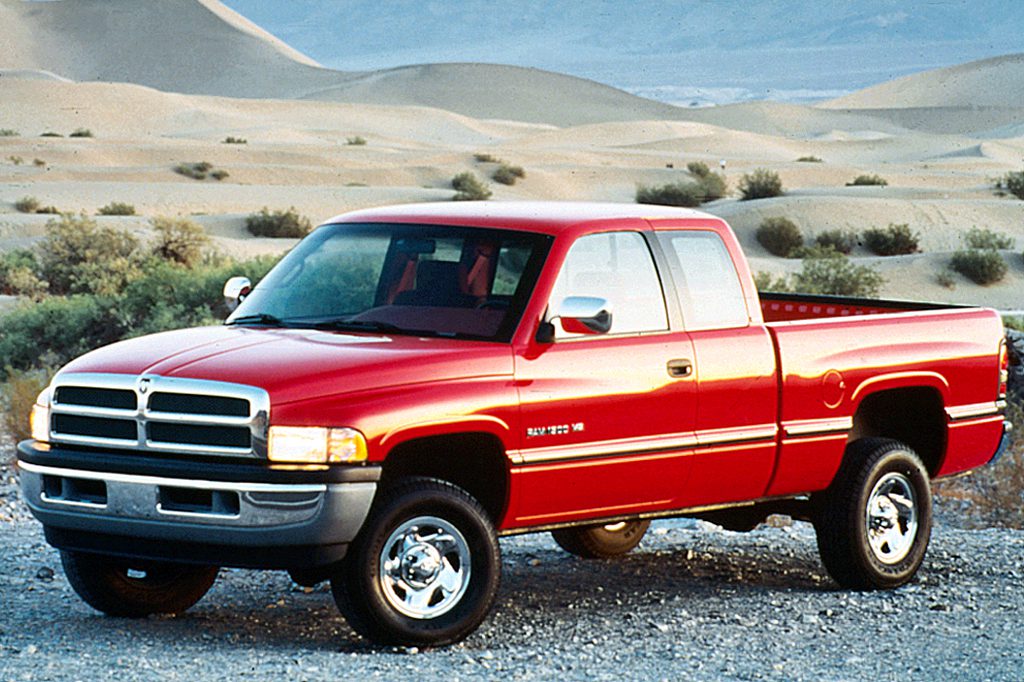
1996 Dodge Ram 1500 4WD Club Cab extended cab
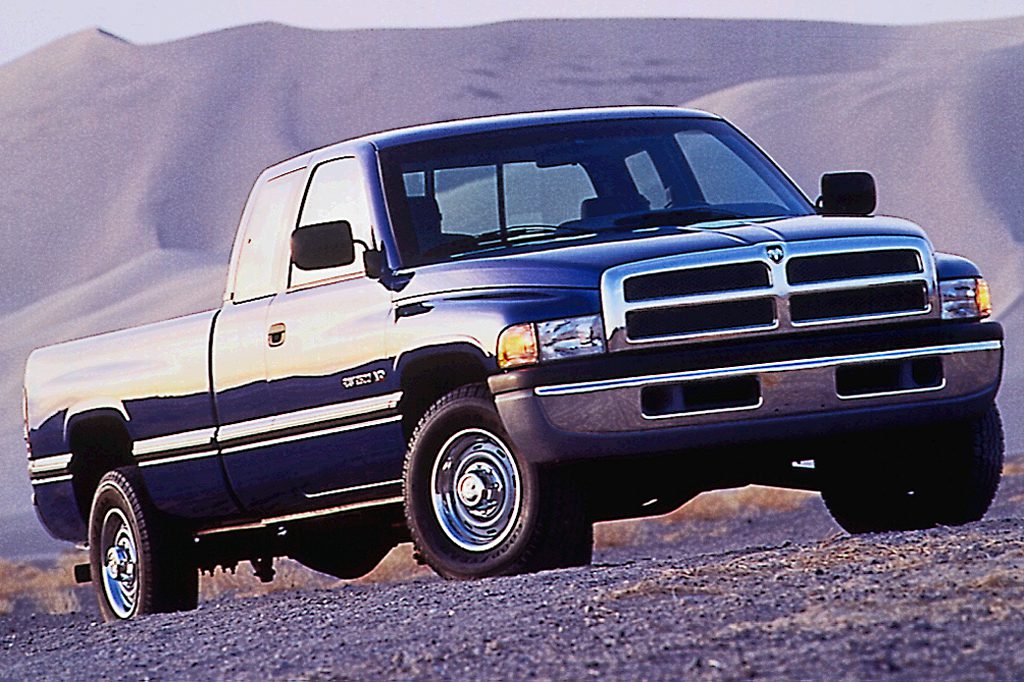
1995 Dodge Ram 2500 Club Cab extended cab
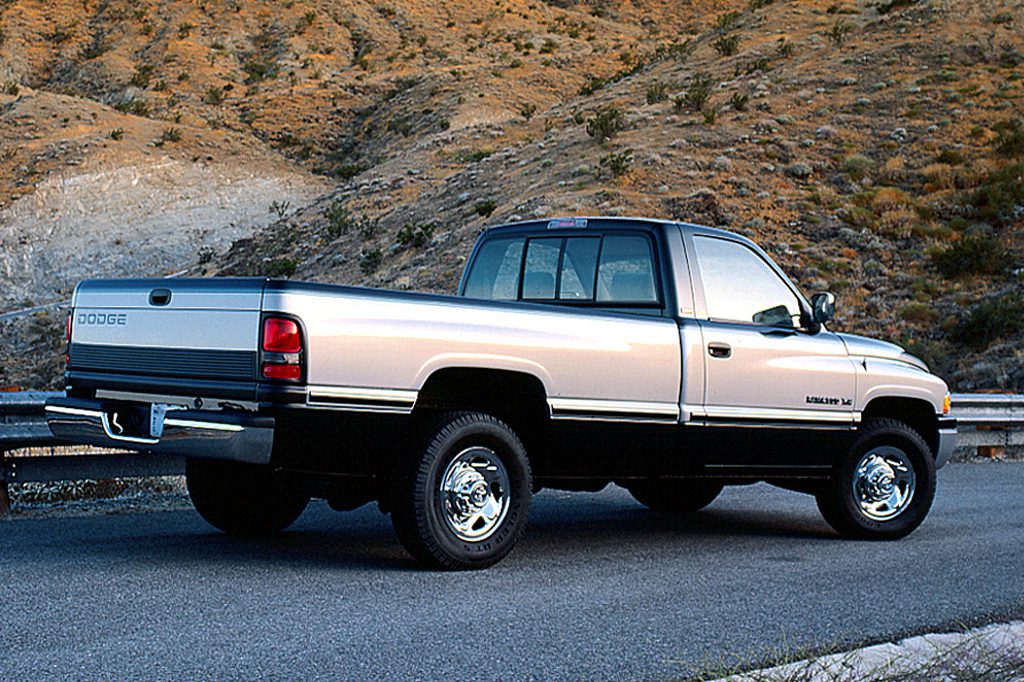
1994 Dodge Ram Laramie 2500 regular cab
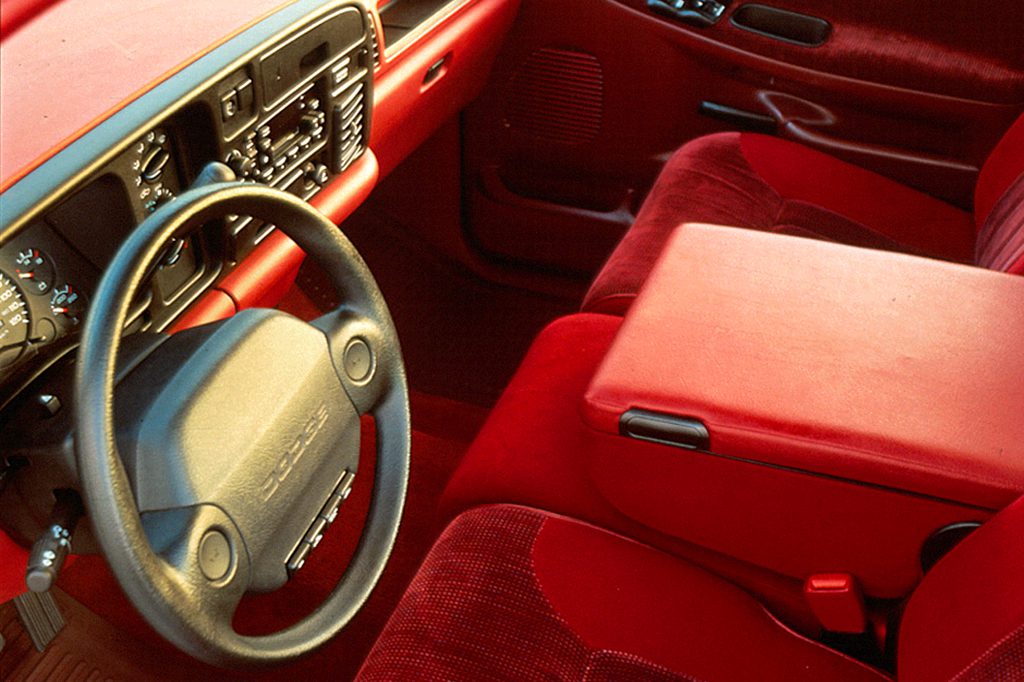
1994 Dodge Ram interior
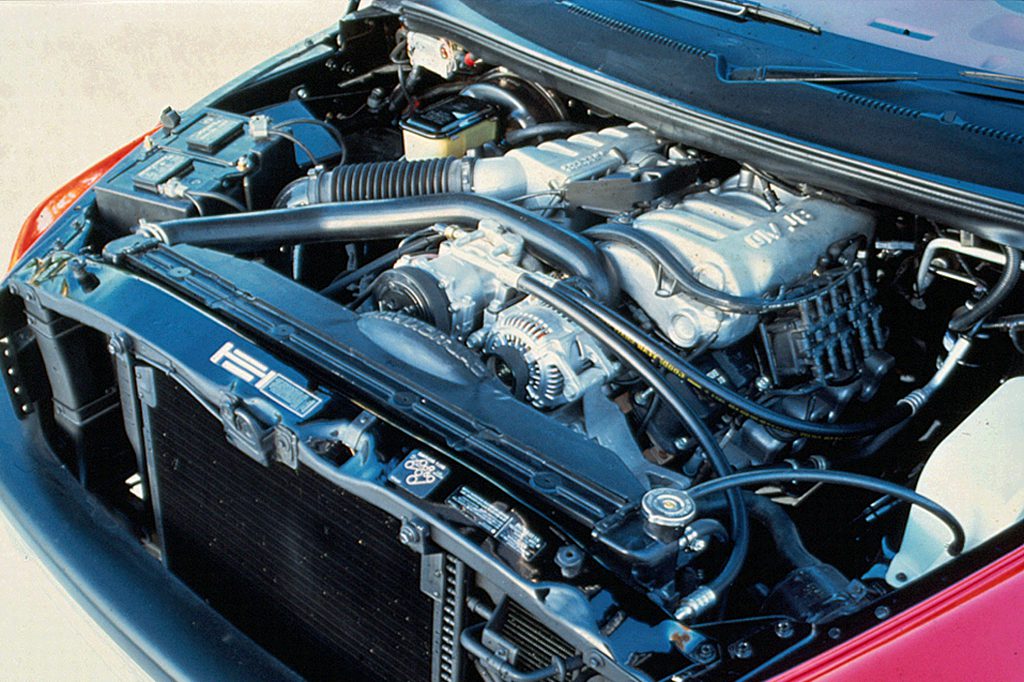
1994 Dodge Ram engine
| Pros: |
|
| Cons: |
|
All told, the impressive Ram is as accommodating and refined as any Ford or General Motors rival. Even if you’re leaning toward another brand, it’s a good idea to test-drive a Ram before buying any full-size pickup.
Overview
After 22 years in its former form, Dodge shelved its full-size pickup design in favor of a bold new Ram. Not only did the new Ram hold a driver-side airbag, it could be equipped with a V10 engine, developing 300 horsepower and 450 pound-feet of torque. Initially sold only with a regular-cab body, the Ram came with a short or long cargo box, 2- or 4-wheel drive, in three series: 1500 (1/2-ton), 2500 (3/4-ton), and 3500 (one-ton), the latter with dual rear wheels. Short-bed Rams had a 118.7-inch wheelbase and 6.5-foot cargo bed. Long-bed models rode a 134.7-inch wheelbase with 8-foot bed. Dodge claimed to have the largest interior of any regular-cab pickup–an extended Club Cab didn’t arrive untill late in 1994. Lowest-priced Ram was the Work Special 1500. Higher-cost versions were named LT, ST, and Laramie SLT. Rear-wheel antilock braking was standard; 4-wheel ABS optional on 1500 and 2500 models, operating in both 2WD and 4WD. A 3-place bench seat was standard; 40/20/40 split bench optional, including a “business console.” Except for the available V10, engines were carried over from the previous generation: V6, three V8s, and a turbodiesel inline six.
Yearly Updates
| 1995 Ram Pickup The late arriving Club Cabs had a 138.7-inch wheelbase and 6.5-foot cargo bed, or a 154.7-inch wheelbase with an 8-foot bed. They were equipped at ST level, with the Laramie SLT their only major option package. The Club Cab’s 3-place rear bench seat can be folded against the rear of the cab for extra cargo room. |
| 1996 Ram Pickup A new extra-cost Camper Special suspension package for heavy-duty models gave Rams extra towing and hauling capacity. Cummins turbodiesel engines gained power. |
| 1997 Ram Pickup Minor changes to interior trim and convenience features were made for 1997, along with a slight power boost for the 5.9-liter V8. The engine shifts from 230 to 235 horsepower. Club Cab (extended cab) models get dark tinted glass for the rear quarter window and optional sliding rear window. |
| 1998 Ram Pickup Dodge added the Quad Cab for 1998. It was the industry’s first full-size 4-door [ickup. Also new was a passenger-side airbag that could be disabled. |
| 1999 Ram Pickup Changes for ’99 included a rotary headlamp switch (replacing a push/pull knob), a new overhead console, and one-touch power down for power driver windows. The Sport appearance group received quad headlamps and a new front bumper, fascia, and grille. |
| 2000 Ram Pickup A new Off Road Group brought increased ground clearance and wheel travel to short-bed, regular-cab, and Quad Cab 4WD Rams. It included 17-inch alloy wheels, a limited-slip differential, tow hooks, skid plates, and other heavy-duty equipment. A new SLT Plus luxury package, optional on Quad Cabs, included power heated leather seats, a CD player with steering-wheel audio controls, and keyless entry with a security alarm. All models now had a standard tachometer and underhood light. |
| 2001 Ram Pickup No significant changes were made for 2001. |
